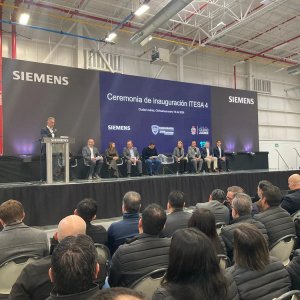Continuous Data Exchange: The Key to Industry Decarbonization

STORY INLINE POST
Did you know that more than 90% of carbon dioxide (CO₂) emissions are generated in the value chain?(1) As there is increased awareness of climate change, as well as amplified regulatory requirements, it is undeniable that an entirely new approach to decarbonizing products is required, one that is data-driven, dynamic, and scalable. Therefore, industrial companies have focused their efforts on accurately tracking Product Carbon Footprints (PCF) along the entire value chain.
Only through an emissions management tool that connects organizations with all their suppliers and facilitates continuous data exchange throughout the product’s life cycle can better data-driven decisions be made to reduce greenhouse gas emissions, thereby accelerating decarbonization.
Where is the current problem and, better yet, what is the solution?
Current PCF management tools use averaging methods to calculate emissions, providing static information. This can result in a lack of certainty when making decisions based on the measurements provided by the tool. Dynamic data, on the other hand, makes it possible to decode a product's carbon DNA. When there is a more accurate "map" of the carbon footprint, there is a better understanding of where and when emissions are occurring along the supply chain, enabling us to take the most appropriate actions at the right time.
Furthermore, the regulations surrounding PCF tracking indicate that data emissions must comply with established standards so that these may be verified at any point in the value chain, if necessary.
At Siemens, we understand these complexities. That's why we've created SiGREEN, a dynamic, scalable, standardized, and data-driven software to manage and reduce emissions across the entire value chain. By quantifying emissions as they occur, this technology creates dynamic PCFs, making it easier to achieve significant and smart reductions. Users can quantify the impact of reduction measures quickly and accurately. While this is happening, partners retain full control of their data, and their confidential information remains protected thanks to the Trustworthy Supply Chain Exchange (TSX).
The most remarkable thing about SiGREEN is that it is a software as a service, fully functional in standalone mode, and ready to use. Depending on the needs of each organization, it can also be integrated into existing IT/OT infrastructure and connected to ERP and other systems, using a variety of interfaces. This technology is part of the Siemens Xcelerator open platform, which includes all the tools and software solutions that enable industries to accelerate their digital transformation.
SiGREEN also benefits suppliers of industrial organizations since they maintain proactive communication and exchange data on real emission values with companies, in a simple, flexible, and cost-effective way, transmitting the results of optimization approaches.
Multiple Industrial Sectors Benefit
With SiGREEN, data on emissions turns into a powerful tool to decarbonize products, which is highly valued by both industries and governments, for which sustainability is a main goal.
The Mexican state of Queretaro stands out as a pioneer on this path. Within the framework of the 2023 United Nations Climate Change Conference (COP28), the state government signed a memorandum of understanding with Siemens Mexico, Central America, and the Caribbean, and the International Estainium Association to reduce greenhouse gas emissions along the value chain of Queretaro's industry.
This action is aligned with the recently implemented State System for Emissions Offset, which enables companies that wish to acquire the State Seal for Low Carbon Emissions to access eligible offset projects, as well as setting the standards for their selection. For a project to obtain this certification, specific criteria are considered, such as demonstrating that the emission reduction is real, measurable, and permanent, in addition to what would have been the case if the project had not been implemented, and subject to independent verification or technical review.
In the laudable goal of decarbonizing Queretaro's industrial and economic activity, SiGREEN will be a key element. As part of this partnership, Siemens will provide other services and solutions, such as Siemens Digital Passport, a comprehensive solution for circularity, promoting more sustainable and transparent business practices for offsetting emissions produced by the business ecosystem. Meanwhile, the Estainium Association will provide its expertise and advanced technology to calculate, exchange, reduce, and offset carbon footprints in supply chains.
Undoubtedly, different industries (automotive, electronics, food and beverage, chemical, among others) face challenging situations that are common and others that are specific to their sector. Whether it's to overcome such challenges or to achieve competitive advantages, reducing and tracking the carbon footprints of products from conception to consumer should be a crucial point in their business plans and growth strategies.
As we stated in a recent report,(2) a secure and reliable industry wide exchange of digital information will make it possible to reduce the emissions of global supply chains and develop strategies to establish and optimize circular economies, thereby increasing resource efficiency both locally and globally. SiGREEN's capabilities, together with Siemens, the Estainium Association, and the state of Queretaro's expertise demonstrate that all of this is possible.
References:
1. "Why your value chain's carbon footprint matters", Normative (2023).
2. "Five Megatrends", Siemens (2023).
















